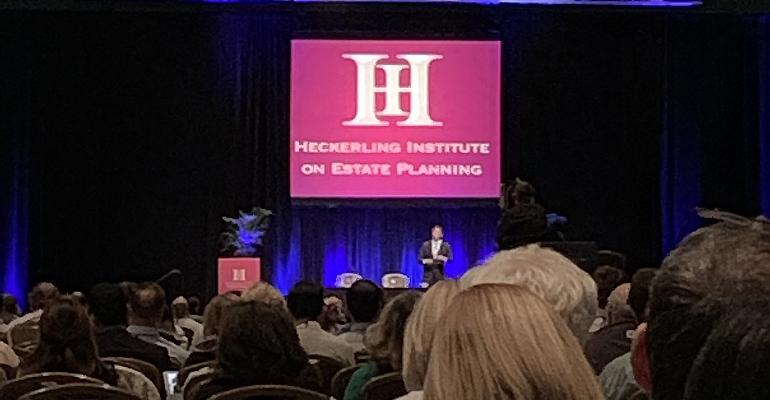The 2019 edition of the Heckerling Institute on Estate Planning is in full swing.
We recently got a chance to sit down and chat with Suzanne Shier, chief tax strategist at Northern Trust, and pick her brain about a variety of tax and philanthropy topics.
WealthManagement.com: The words on everyone’s lips right now are "tax reform." What can advisors recommend to their clients going forward?
Suzanne Shier: We’re all getting used to the new paradigm. I think the major opportunities are for business owners to take advantage of the 20 percent deduction and be proactive about managing their taxable income, because they have the ability to put themselves in a situation to take full advantage of the deduction. They can manage taxable income by the timing of business income, charitable gifts or retirement savings.
Another area is philanthropy. We’re continuing to look at opportunities to give appreciated securities to charity, as we always have, as well as making direct contributions from IRAs to charities for clients over age 70½. There’s definitely an upside there in terms of managing adjusted gross income or other thresholds. We’re also seeing a great deal of interest in bunching giving.
WM: What’s "bunching giving"?
SS: We have a $24,000 standard deduction threshold for 2018. Say we have a client who gives regularly, and maybe that threshold, if they continued to give what they usually give each year, would eliminate the tax benefits of their gift. Well, what if in 2018, they make two years' worth of gifts, so they’re above the $24,000 threshold, they take a pause in 2019, and then they pick up as normal again in 2020. They’re giving the same amount, just timing it differently. So, in 2018 and 2020, they’ll itemize, and in 2019, they’ll take the standard deduction.
Now it’s important to note that this bunching can be difficult for certain smaller charities to manage, as they rely on consistent donations. That’s where donor advised funds come in. The donor can make the contribution into the DAF, and then the DAF can make distributions to charities in the normal course. And, if you add to that, maybe, making a contribution of appreciated securities that the DAF can then sell, the donor is now achieving their charitable and tax objectives and the charity is getting a steady flow of cash contributions.
WM: For the second year running, "income tax" and "basis" in particular are, rightly so, the buzzwords of the conference. What are your thoughts on this development?
SS: I think it’s just a reminder to us that we have a multifaceted tax system, and as trusts and estates practitioners we may have had too much of a laser focus on gift, estate and generation-skipping transfer taxes, and now we have to be more balanced and take income tax into consideration. I think really comprehensive planning takes both into account and it takes more than one generation into account.
For example, say someone has a taxable estate and a $15 million piece of appreciated real estate with a $5 million basis. If they give that real estate away and someone then sells it, they’re on the hook for a $10 million gain. This isn’t all bad, since the house has been removed form the estate, but there’s that pesky income tax cost. Now consider the same client borrows $10 million against the real estate, takes that $10 million and funds a grantor retained annuity trust (GRAT), invests that, and if history is any indicator this is a good time to enter the market, that GRAT performs [beats the hurdle rate] and the individual survives the GRAT term before eventually dying. When we look at what’s happened here, the real estate now gets a free basis step-up, so there’ll be zero income tax on the sale of that property and they’ve transferred value out of the estate through the GRAT.
WM: So, you’re saying the tools are there. Your example used a GRAT, maybe the most common trust type in estate planners’ tool chests, just in a slightly different way than normal, with different assets and in conjunction with a lending transaction.
SS: I do think the outlook is positive. I think that we need to take a more fulsome view of income and wealth transfer taxes and think of the strategies and tools we have and figure out how to piece them together.
WM: What are clients and practitioners consistently missing in their planning?
SS: This one isn’t rocket science: it’s beneficiary designations. I think beneficiary designations are the sleeper, and not only failing to have beneficiary designations and asset titling that are aligned with the plan, but also taking greatest advantage of these options.
We have tremendous accumulations of wealth in tax-deferred IRAs and 401(k)s. Looking at the big picture, should we consider the beneficiary designations of these vehicles and maybe have our philanthropic goals funded with distributions from them?
That being said, such a plan has to be well considered. You shouldn’t just funnel retirement funds into a revocable trust and have that make distributions. There are too many traps for the unwary there. You have to really dot your i's and cross your t's.





